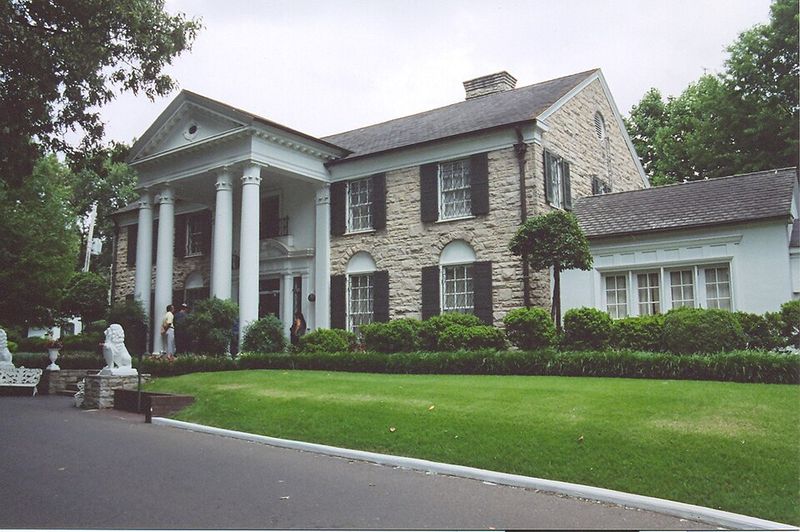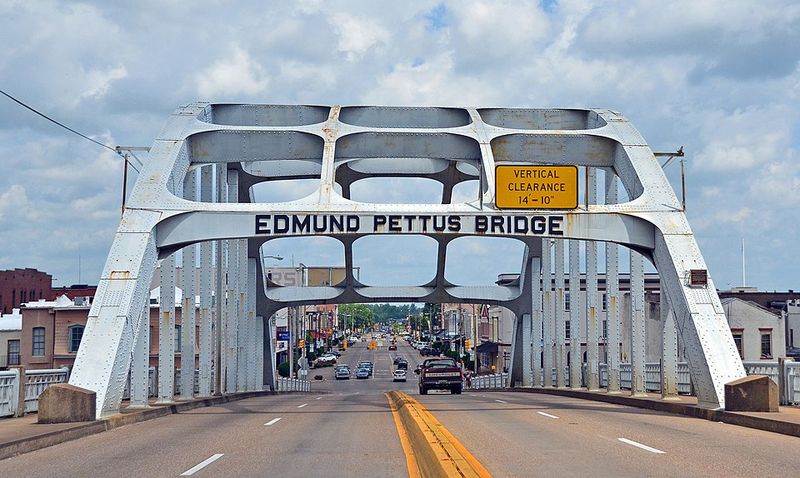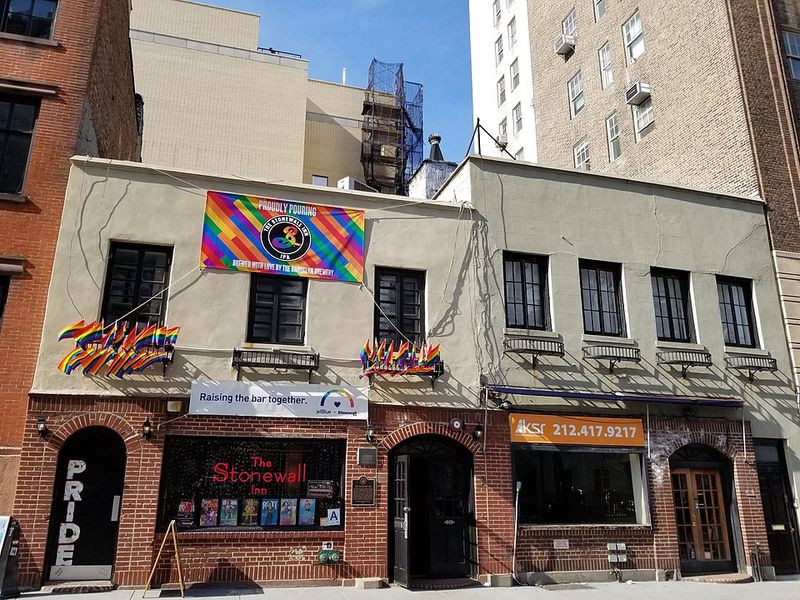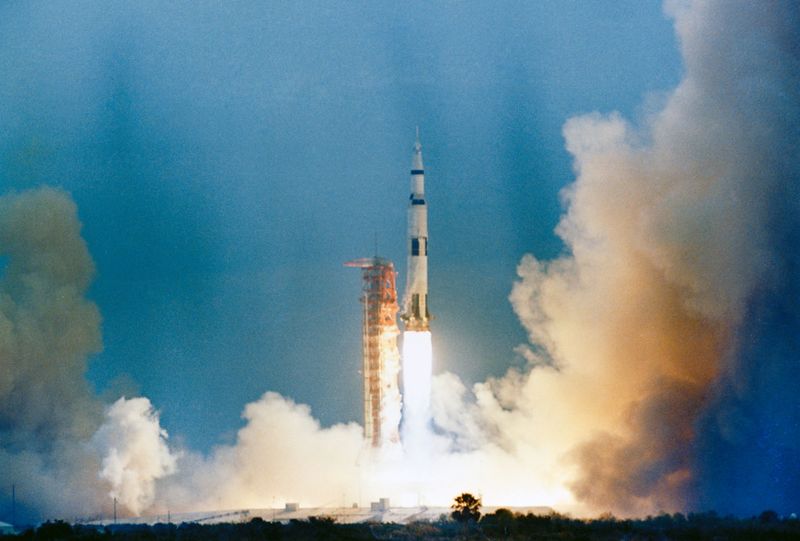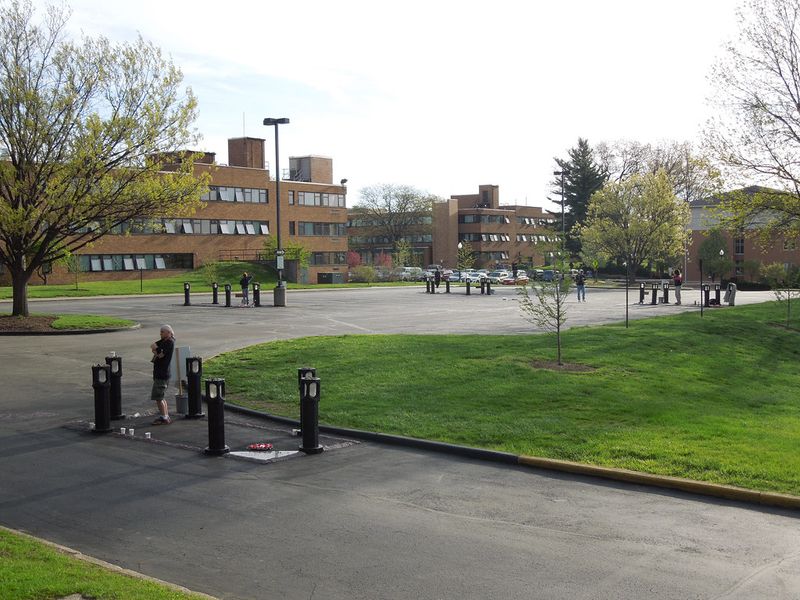Baby Boomers grew up during one of the most exciting and turbulent times in American history. From the 1950s through the 1970s, certain places became more than just locations, they turned into symbols of change, hope, rebellion, and progress. These landmarks witnessed concerts that defined a generation, protests that changed laws, and moments that were broadcast into millions of living rooms across the country. Whether you are a Boomer yourself or simply curious about this fascinating era, these 14 places tell the story of how a generation came of age.
1. Graceland (Memphis, TN)
Elvis Presley purchased this mansion in 1957, and it quickly became the heart of rock and roll royalty. When tours opened on June 7, 1982, fans from around the world lined up to walk through the King’s living room, jungle room, and trophy hall.
In 2006, Graceland earned its place as a U.S. National Historic Landmark, cementing its cultural importance. For Boomers, visiting Graceland was like stepping into the world of the music that soundtracked their youth.
The estate still draws hundreds of thousands of visitors each year. Every corner tells a story of fame, music, and the larger-than-life personality who changed entertainment forever.
2. Disneyland (Anaheim, CA)
When Walt Disney opened his theme park on July 17, 1955, the event was broadcast live on national television. Millions of Americans watched as a new kind of family entertainment was born, blending fantasy, technology, and storytelling in a way no one had seen before.
Disneyland became a pilgrimage site for postwar families seeking optimism and fun. Boomers remember standing in line for the Matterhorn, spinning in teacups, and meeting Mickey Mouse for the first time.
The park represented the American Dream in action—a place where imagination had no limits. Its success launched an empire and set the standard for theme parks worldwide.
3. Haight-Ashbury (San Francisco, CA)
In 1967, roughly 75,000 to 100,000 young people flooded this San Francisco neighborhood during the Summer of Love. They came seeking freedom, community, and a new way of living that rejected mainstream values.
Haight-Ashbury became synonymous with counterculture—psychedelic music, tie-dye fashion, and anti-war protests. Bands like the Grateful Dead and Jefferson Airplane lived and performed there, turning the district into a cultural laboratory.
For many Boomers, this neighborhood represented rebellion and hope. It was a place where social norms were challenged, and a generation tried to reimagine what America could be.
4. Woodstock Site at Max Yasgur’s Farm (Bethel, NY)
Between August 15 and 18, 1969, an estimated 400,000 to 450,000 people gathered on a dairy farm for three days of music, mud, and peace. What was supposed to be a ticketed concert turned into a free festival when fences came down and crowds poured in.
Jimi Hendrix, Janis Joplin, The Who, and dozens of other acts performed. The event became a symbol of Boomer ideals—community, love, and resistance to war.
Despite logistical chaos, Woodstock is remembered as a moment of unity. It proved that music could bring people together and create something bigger than any individual performance.
5. Lincoln Memorial Steps, National Mall (Washington, D.C.)
On August 28, 1963, more than 250,000 people marched to the Lincoln Memorial to demand civil rights and economic justice. Dr. Martin Luther King Jr. stood on the steps and delivered his “I Have a Dream” speech, a moment broadcast live into homes across the nation.
For Boomers watching on television or attending in person, the speech was a turning point. It called for equality and justice in words that still echo today.
The march helped push forward landmark legislation, including the Civil Rights Act of 1964. These steps became sacred ground in the fight for human dignity and equality.
6. Edmund Pettus Bridge (Selma, AL)
On March 7, 1965, approximately 600 peaceful marchers set out from Selma toward Montgomery to demand voting rights. As they crossed the Edmund Pettus Bridge, state troopers attacked them with clubs and tear gas in an assault that became known as Bloody Sunday.
Television cameras captured the violence, and the footage horrified millions of Americans. The brutality galvanized support for the Voting Rights Act, which President Lyndon B. Johnson signed into law later that year.
For Boomers, this bridge symbolized both the ugliness of oppression and the courage required to fight it. The march and its aftermath changed the course of American democracy.
7. Stonewall Inn (New York, NY)
In the early hours of June 28, 1969, police raided this Greenwich Village bar, a common occurrence at the time. But that night, patrons fought back, sparking six days of protests and clashes that launched the modern LGBTQ+ rights movement.
The Stonewall uprising transformed how queer Americans saw themselves and their power. Within a year, Pride marches were organized in major cities, and activism surged.
Today, the site is protected as Stonewall National Monument, honoring the bravery of those who refused to hide. For Boomers who lived through it, Stonewall was a declaration that everyone deserves dignity and equal rights.
8. Hitsville U.S.A. / Motown Museum (Detroit, MI)
Berry Gordy founded Motown Records in this modest house in 1959, and it became the birthplace of a sound that defined a generation. Artists like Stevie Wonder, Diana Ross, Marvin Gaye, and The Temptations recorded hits in the tiny Studio A.
Motown’s music crossed racial barriers at a time when America was deeply divided. The smooth, soulful sound dominated radio and gave Boomers the soundtrack to their teenage years.
The label proved that Black artists could achieve mainstream success on their own terms. Today, the Motown Museum preserves the studio and tells the story of how one man’s vision changed music forever.
9. The Ed Sullivan Theater / CBS Studio 50 (New York, NY)
On February 9, 1964, over 70 million Americans tuned in to watch four young men from Liverpool perform on The Ed Sullivan Show. The Beatles’ U.S. television debut ignited Beatlemania and changed the music industry overnight.
Screaming fans packed the studio, and the energy was electric. Songs like “I Want to Hold Your Hand” and “She Loves You” introduced a new sound and style that captivated Boomer teens.
That single broadcast shifted the course of pop culture. It proved television’s power to create instant stars and gave Boomers a band that would define their generation’s music and attitude.
10. Levittown (Long Island, NY)
Built between 1946 and 1951, Levittown was the first mass-produced suburban community in the United States. Developer William Levitt used assembly-line techniques to build thousands of affordable homes quickly, offering returning World War II veterans a chance at homeownership.
The community featured cookie-cutter houses, wide streets, and shopping centers—a blueprint copied across the country. Boomers grew up in these neighborhoods, riding bikes on cul-de-sacs and attending newly built schools.
Levittown represented the American Dream but also exposed its flaws, including racial segregation through restrictive covenants. Still, it shaped the suburban childhood millions of Boomers experienced.
11. Kennedy Space Center, Launch Complex 39A (Merritt Island, FL)
On July 16, 1969, Apollo 11 lifted off from Pad 39A, carrying astronauts Neil Armstrong, Buzz Aldrin, and Michael Collins toward the moon. An estimated 650 million people worldwide watched the launch and moon landing on television.
For Boomers, the space race was a thrilling competition that showcased American ingenuity and ambition. The successful moon landing fulfilled President Kennedy’s promise and became a defining triumph of the era.
The launch complex remains active today, but that 1969 mission holds a special place in history. It was a moment when science fiction became reality, and a generation believed anything was possible.
12. Watergate Complex (Washington, D.C.)
On June 17, 1972, five men were arrested for breaking into the Democratic National Committee headquarters at the Watergate Complex. What seemed like a minor burglary unraveled into a massive political scandal that reached the White House.
Journalists Bob Woodward and Carl Bernstein investigated, revealing a cover-up orchestrated by President Richard Nixon’s administration. The scandal dominated news coverage and congressional hearings for two years.
Nixon resigned on August 9, 1974, the first president to do so. For Boomers, Watergate shattered trust in government and showed that no one, not even the president, was above the law.
13. Kent State University, May 4 Site (Kent, OH)
On May 4, 1970, Ohio National Guardsmen opened fire on students protesting the Vietnam War, killing four and wounding nine others. The tragedy occurred during a noon rally on the university commons, shocking the nation.
Photographs of the victims, including the iconic image of a young woman kneeling beside a fallen student, spread across newspapers and television. The shootings sparked protests on college campuses nationwide and deepened opposition to the war.
For Boomer youth, Kent State became a grim symbol of government violence against its own citizens. The event remains a somber reminder of the costs of dissent and the fragility of peace.
14. Monterey County Fairgrounds (Monterey, CA)
In June 1967, the Monterey International Pop Festival brought together some of the biggest names in music for three days of performances. Jimi Hendrix set his guitar on fire, Janis Joplin wowed the crowd with raw emotion, and The Who smashed their instruments on stage.
The festival was one of the first major rock events and helped launch several careers. It also introduced many Americans to the San Francisco sound and the counterculture movement.
For Boomers, Monterey was a preview of Woodstock and the music festivals that would define the era. It proved that rock and roll was more than entertainment—it was a cultural force.

